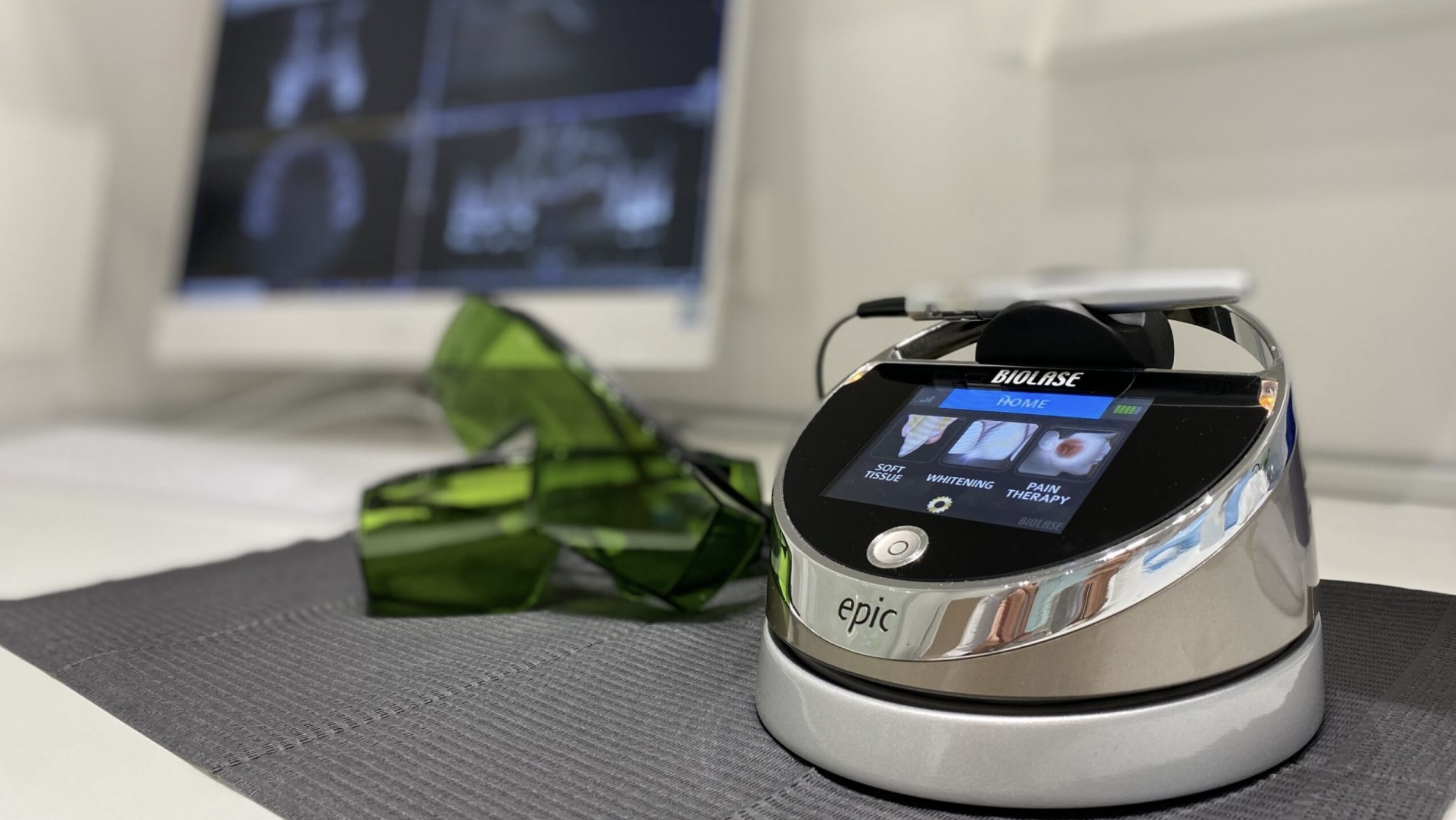In recent years, the use of lasers in dentistry has grown exponentially, providing significant benefits in both therapeutic and surgical procedures. Among the various pathologies treated with laser, peri-implantitis is one of the most relevant in the field of implantology. This disorder, which affects the tissues surrounding dental implants, can put the stability of the implant at risk if not treated properly. Next, we will analyze the different types of lasers used in dentistry and their specific application in the treatment of peri-implantitis, placing special emphasis on the diode laser.
Types of Lasers in Dentistry. There are several types of lasers used in dentistry, each with specific characteristics that make them more suitable for different types of tissues and procedures. Some of the most common are:
Diode Laser
The diode laser is one of the most used in dentistry due to its versatility and its ability to act on both soft tissues and bacterial disinfection. This laser emits a wavelength in the near-infrared spectrum (810-980 nm), which allows it to be easily absorbed by melanin and hemoglobin, making it ideal for soft tissue procedures.
Application in peri-implantitis: In the treatment of peri-implantitis, the diode laser is particularly effective due to its ability to destroy bacteria that reside on the surface of the implant without damaging the surrounding tissues or the titanium of the implant. In addition, its use promotes faster healing and reduces postoperative bleeding.
Erbium Laser: Er:YAG
This laser works at a wavelength of 2940 nm and is highly absorbed by water and hydroxyapatites, making it an ideal tool for both the treatment of hard tissues (such as bone and enamel) and soft tissues. It is used in cavity preparation, periodontal procedures and disinfection of areas affected by peri-implantitis.
Application in peri-implantitis: The Er YAG laser is extremely useful in the treatment of peri-implantitis, as it allows the decontamination of the implant surface and the removal of granulation tissue without affecting the surrounding bone. Its ability to work on hard tissue also makes it effective in removing tartar attached to the implant.
Neodymium Laser: Nd-YAG
The Nd-YAG laser, which emits a wavelength of 1064 nm, is another type of laser widely used in soft tissue treatment. It is known for its ability to penetrate deeply into tissues and its high effectiveness in coagulation and disinfection.
Application in peri-implantitis: This laser is mainly used for the deep disinfection of tissues affected by peri-implantitis. It is effective in eliminating anaerobic bacteria found in periodontal pockets and around implants, helping to reduce inflammation and promote healing.
CO2 laser
The carbon dioxide (CO2) laser works at a wavelength of 10,600 nm and is highly absorbed by water. It is known for its high precision in soft tissue incision and coagulation, making it suitable for various surgical applications.
Application in peri-implantitis: In the case of peri-implantitis, the CO2 laser can be useful for performing access surgeries and removing infected tissue. In addition, its coagulation capacity is ideal for reducing bleeding during the procedure. However, its use in implant decontamination is limited due to its low penetration capacity into metal surfaces.
Application of Lasers in the Treatment of Peri-implantitis
Peri-implantitis is an inflammation that affects the tissues surrounding dental implants and, if left untreated, can lead to loss of the implant. Lasers, due to their ability to eliminate bacteria, decontaminate surfaces and promote tissue regeneration, are an increasingly used tool in their treatment.
Advantages of using laser in peri-implantitis:
- Effective decontamination: Lasers allow precise and effective removal of bacteria found in the soft and hard tissues around the implant.
- Less invasive: Laser procedures are typically less invasive than traditional methods, reducing postoperative pain and speeding recovery.
- Tissue and implant preservation: Lasers can decontaminate without damaging the surface of the titanium implant, maintaining its integrity.
- Less bleeding and faster healing: The coagulation capacity of certain lasers, such as diode and Nd-YAG lasers, helps minimize bleeding during procedures and promotes faster healing.
Conclusion
The use of lasers in dentistry has revolutionized the treatment of various pathologies, and in the case of peri-implantitis, it has proven to be an invaluable tool. Among the different types of lasers, the diode laser stands out for its versatility and effectiveness in bacterial decontamination, while other lasers such as Er:YAG and Nd-YAG also offer significant advantages in tissue preservation and promotion of a quick recovery. Choosing the right laser will depend on the type of tissue being treated, as well as the severity of the case.

